Preparation for transport locks in cattle condition
For New England beef producers Lock and Liz Rogers, prior preparation is everything when it comes to ensuring their cattle arrive in top condition for their buyer.
Along with their farm manager Adam Faint, Lock and Liz run a self-replacing herd, with Angus breeders joined to Wagyu bulls.
With most of their cattle turned off into long-fed programs for export, Lock said particular care is taken on both their properties to ensure cattle are in good order for transport to feedlots.
“We always make sure we’ve had the cattle in the yards pretty recently before trucking, and we draft them up to see which cattle are going,” Lock said.
“For cattle that are going into the feedlots, they would’ve been into the yards at least a week prior to transport, and anything that’s lame or injured, we’d draft out. They are then checked again the day of loading.”
Spelling livestock before their journey is also essential to make sure they’re fit for transport.
“We’ve only got one set of cattle yards on ‘Karuah’, so quite often cattle to be loaded have had a bit of a walk to get there,” Lock said.
“With these cattle, we walk them down several days before transport and they are spelled for a couple of days before they go on the trucks.”
Reducing stress, making space
When it comes to loading livestock, Lock said minimising stress placed on cattle as they load goes a long way to ensuring their welfare and wellbeing.
“We’ve pretty much got a no-jigger policy on our farm,” Lock said.
“Handling stock quietly and in a stress-free manner is really important – and I know there’s a lot of producers doing that now.”
Lock said working with transporters to give cattle the correct amount of space in each pen on the truck was another way to ensure cattle arrive at their destination uninjured.
“For example, with our feeder steers, we make sure there’s an even number in every pen, depending on their weight.”
Upgrading facilities
The Rogers maintain their loading facilities so livestock can be loaded quickly and safely, and recently made modifications to loading ramps to improve the flow of livestock through the yards.
“Our old loading ramps used to be quite short and steep, being the same width as a normal race leading up to a crush or working area,” Lock said.
“Now, we make our loading ramps and race going up to the trucks 100mm wider and the cattle flow freely as the ramps are now longer and more gradual.”
They have also added grips and treads all the way up the race and slope of the ramp, to prevent cattle slipping and panicking.
“Even better still would be a loading dump straight into a yard – which we’ll incorporate into the next set of yards we build this autumn.”
Expect the unexpected
Climatic extremes have reinforced the value of having a fallback plan in place for loading or unloading livestock.
“You always need to be prepared,” Lock said.
“In March last year, we had massive rains and we couldn’t get trucks to our cattle yards because the roads were so washed out.
“We had to be a bit flexible and communicate with our neighbour and transporter, and we walked them down to a holding paddock at our neighbour’s property the night before and then loaded them safely from there.
“You need to be a little bit creative sometimes with your arrangements to be safe.”



